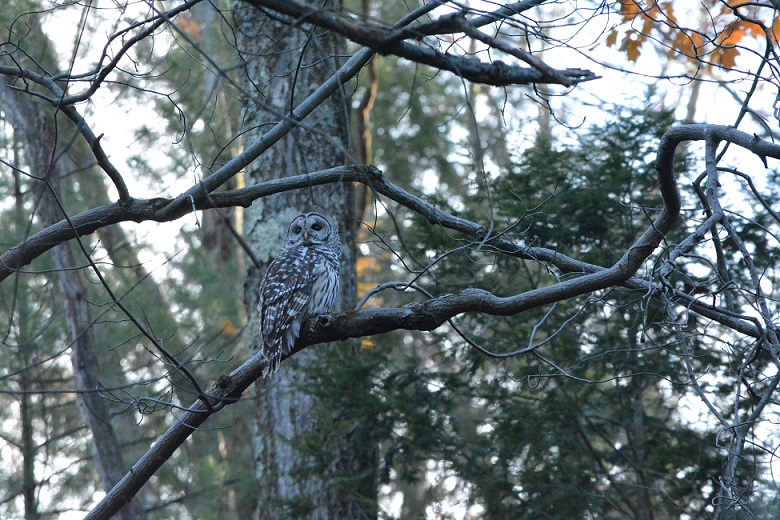As we continue our travels through Model Universe (I definitely prefer the Marvel version), we found ourselves playing a game of hide and seek. Of course, this is the essence of all wildlife population endeavors. However, since we are professionals, we give it a fancy name: mark-recapture. That sounds more sophisticated and worthy of adult attention.
Ok, we know the problem: accounting for the unknown. I’ve said it before and I’ll keep saying it – YOU CAN NOT AND DO NOT SEE EVERY CRITTER ON THE LANDSCAPE.
Mark-recapture is one of the more “fun” estimation techniques, if there is such a thing. In these studies, individuals from a population are “captured” and uniquely “marked.” The population is then sampled again and data are gathered on the number of marked animals that are recaptured. This sounds simple and intuitive. The Lincoln-Petersen model is the basis for mark-recapture modeling. It was first used in 1786 to estimate the human population of France and sets the stage for more complex models.
The assumptions of the Lincoln-Petersen model are
- the population is closed meaning there are no additions or subtractions to the population of interest
- all animals are equally likely to be captured in each sample
- marks are not lost, gained, or overlooked
Mark-recapture estimates yield a snapshot in time of the population over a certain period (i.e. between capture events). If the time between capture and recapture is relatively short, the closed population assumption can be met.
The second assumption of equal capture probability is problematic. Individuals may be more or less likely to be captured or recaptured based on things like sex, age, social status, spatial distribution, or capture efforts. And then there’s behavior – where a marked animal becomes a bestie (trap happy) or is scarred for life (trap shy). Since estimates are based on the number of marked individuals recaptured, a violation of this assumption affects the final estimate positively or negatively.
One solution to this problem is to combine different capture and recapture techniques – like photographs or harvest. There are of course more complex techniques that can account for the variation in capture probabilities that involves lots of equations. Remember, the Lincoln-Petersen estimator is the simplest model of a whole group of mark-recapture models.
Identifying individuals is also important hence the assumption that “marks” are retained and noted. Therefore, tag loss can be an issue if that is the method of marking. We use tags to individually ID all kinds of critters – deer, bear, birds, butterflies (yes, butterflies can be tagged!). Those of course can be lost but there are other ways to mark animals – like stripe patterns (tigers), spot patterns (jaguars and fawns), scars (manatees), or DNA (all living things!).
The mark-recapture method is used annually to estimate the deer harvest and the bear population in Pennsylvania. So why don’t we use it to estimate deer populations?
It’s too expensive. It costs about $1,000/deer captured and you can only capture deer easily (a relative term) from mid-January through March. Bears, on the other hand, are captured in dens, while dealing with nuisance problems, and trapped May-July, sometimes into August. Still, capturing bears costs a lot of money and requires the capture and marking of 700 animals across bear range every year (note this is NOT the entire state).
Ok, but what if we could mark enough animals…like elk? Surely, this method can work for them. They are big; they don’t populate every corner of the state; and there is a finite number of them.
We tried but it didn’t go so well. Elk were captured and marked with large visible collars. To “recapture” them, surveys were flown to count marked and unmarked animals.
The first issue is cost. It is super expensive to capture then hire an aircraft to “recapture” elk. And this is just for 3,757 square miles! Deer are all over that state. That’s 46,055 square miles. We would need to do this in every management unit.
The whole point of mark-recapture is “recapturing” your marked individuals. That’s not so easy either. Believe it or not, spotting animals with large bright yellow numbered collars from the air is not as easy as it sounds. Elk (aka giant deer) are pretty good at hiding. Even with snow on the ground the proportion of marked elk detected varied from 43-85%!
And then there is weather. To see elk, you need to fly in the winter when there are no leaves on the trees and snow. That’s not always easy and snow is key to see these giant deer. Without snow cover, detection drops off even more.
And lastly, if you want to kill a biologist, you put them in a plane to conduct a population survey. Low-level aerial surveys are the most dangerous work-related activity for biologists. They are conducted in remote areas in rugged terrain with the potential for inclement weather. Sixty-six percent of job-related mortality for wildlife biologists from 1937-2000 was due to aviation accidents. One reason I like to keep my feet firmly planted on the ground at work…that and I get motion sick.
That’s how wildlife biologists play at hide and seek. While mark-recapture models are adequate, those nagging constraints of time, personnel, and money put the kibosh on this method for estimating the deer population in Pennsylvania.
If you would like to receive email alerts of new blog posts, subscribe here.
And Follow us on Twitter @WTDresearch
This post is part of a series on Population Estimation
Seekers (you are here)
